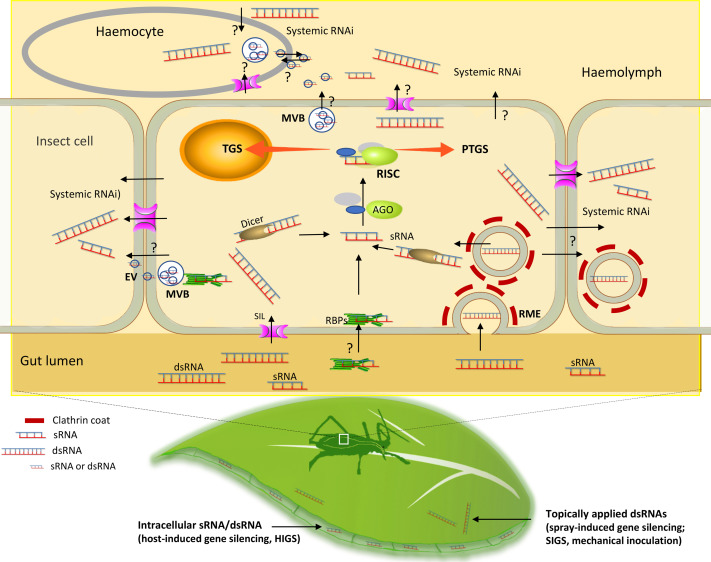Context:
Researchers at Martin Luther University Halle-Wittenberg in Germany have recently developed an RNA-based antiviral agent offering strong protection against cucumber mosaic virus (CMV), a destructive plant virus.
· CMV infects over 1,200 plant species, including vital crops like cucumbers, pumpkins, and cereals. It spreads through aphids, making outbreaks difficult to control. In India, CMV causes 25-30% yield losses in banana plantations, and infection rates can reach up to 70% in cucumbers and melons, resulting in stunted growth and unviable fruits.
HIGS and SIGS:
The study utilized RNA silencing, a natural defense mechanism in plants. When a virus infects a plant, it introduces double-stranded RNA (dsRNA), which triggers the plant’s immune response. The plant activates enzymes that cut the dsRNA into small fragments called small interfering RNAs (siRNAs), which then guide the plant to destroy the viral RNA.
· However, the process is not foolproof. The virus often mutates rapidly, evading the plant’s defenses. To strengthen immunity, researchers are exploring RNA-based approaches like Host-Induced Gene Silencing (HIGS) and Spray-Induced Gene Silencing (SIGS).
· HIGS involves genetically modifying plants to produce virus-fighting dsRNA, providing continuous protection. However, regulatory challenges and potential viral resistance limit its use.
· SIGS, on the other hand, involves spraying RNA onto plants to trigger their immune response without modifying their DNA. While SIGS is cost-effective and eco-friendly, its effectiveness is limited by inefficient siRNA production.
Enhancing RNA Silencing for Stronger Protection
Every year, plant viruses destroy nearly 40% of global crops, causing losses over $220 billion, with viruses contributing to more than $30 billion of this. Unlike bacteria or fungi, viruses are harder to control. Scientists have turned to RNA-based technology to boost plant defenses, mimicking the immune system’s response to viruses. The new dsRNA approach offers three key advantages:
(i) precision, directing the immune system to vulnerable viral regions,
(ii) stronger defense by targeting multiple viral genome regions, and
(iii) The ability to redesign dsRNA to target new viral strains within a month.
Cucumber Mosaic Virus (CMV)
Cucumber Mosaic Virus (CMV) is a common plant virus that results in considerable economic damage worldwide, especially to crops such as cucumbers, melons, and tomatoes.
· It is mainly spread by aphids, though it can also be transmitted through contaminated tools or plant sap.
· CMV causes symptoms including mosaic-like patterns on leaves, stunted growth, and a decrease in crop yields.
Conclusion:
Researchers are working on making RNA-based treatments practical for real-world use, developing spray-based solutions for field trials. While the technology showed promise against CMV, it can also be applied to other plant viruses like tomato yellow leaf curl virus and tobacco mosaic virus. Challenges remain in RNA stability outdoors, cost, scalability, and regulatory approval. Nevertheless, this breakthrough holds great potential for revolutionizing plant virus protection.







